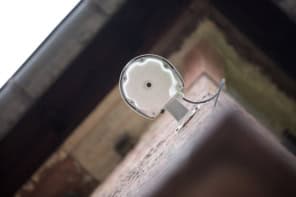A new technique that allows researchers to calculate the three-dimensional structure of polycrystallites has been discovered. Until recently the preferred method for calculating 3D structures, X-ray diffraction, could only be used with single crystals. The new technique yields structures for polycrystalline materials that are similar in quality to those obtained from single crystals (Science 284 477).
Polycrystalline materials contain lots of tiny crystals oriented randomly in space. Thomas Wessels, Christian Baerlocher and Lynne McCusker from the Swiss Federal Institute of Technology in Zürich have found a way to orient these tiny crystals. A synchrotron X-ray source can then be used to determine the atomic structure. According the researchers the method “can be applied to any class of compounds.”
Old polycrystalline diffraction techniques relied on two experimental approaches. In both cases, several powder diffraction patterns are collected on the same polycrystalline sample. One method relies on changing the temperature of the sample: as the temperature increases, the lines of the diffraction pattern change. The second technique uses several samples of the same compound but with different structural ‘textures.’
Wessels, Baerlocher and McCusker’s new technique relies on the highly parallel, monochromatic X-rays generated by an intense synchrotron X-ray source. The precise nature of the beams allows the researchers to discover the distribution of the crystals’ orientation. By rotating the sample in the beam, they could gather a number of different diffraction patterns. A highly detailed image of the sample is then obtained by using existing methods for analyzing diffraction patterns.



